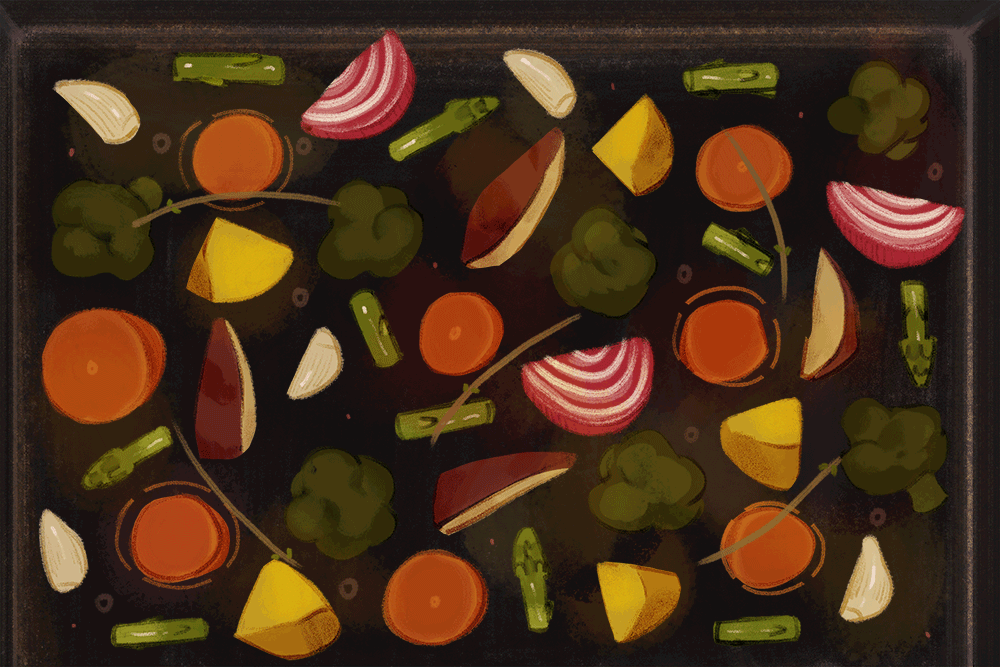Roots : The Beet Goes On
A single bunch of beets yields two vegetables--bulb-shaped roots and crinkly greens. Although the bulbs can be shredded raw for salads, more often they’re cooked. Young, tender leaves may be used raw as a salad green; mature greens are best cooked by the same method as spinach.
Although the most common variety of this root vegetable has red wine-colored flesh, there are also golden or almost-white bulbs. All types have a similar flavor.
Select beets that are well-shaped, firm, with a healthy color and smooth skins. Bulbs small to medium in size have the best flavor; larger ones tend to be less sweet and more woody. Figure one-third to one-half pound per serving.
Beet leaves should be deep-green with red veins and stems. Choose those that are fresh and unwilted.
Because evaporation from the large surface area of the leaves saps root moisture and nutrients, the bulbs should be separated from the greens before storing. Cut the two apart, leaving one inch to two inches of stem attached to the bulbs (Step 1).
Store the bulbs, unwashed, in a plastic food bag in the refrigerator for up to a week. Greens should be refrigerated and used within three days, washing well just before use.
Beets will retain color, flavor and nutritional value best if you don’t peel them, leave some stem attached to the bulbs and don’t trim off the long root ends. Before boiling or baking, rinse the bulbs with cold water and scrub gently (Step 2), being careful not to break the thin skins.
To Boil: Cook, covered, in boiling water until tender when pierced, 20 to 50 minutes, depending on size. Drain, plunge in cold water 1 to 2 minutes, then peel (Step 3) and remove stem and root ends (Step 4).
To Bake: Wrap each beet in heavy-duty foil and bake at 375 degrees until tender when pierced, 1 to 3 hours, depending on size. Cool enough to handle, then cut off tops and root and slip off skins.
Beets may be served whole, diced or sliced. For an attractive variation, use a crinkle cutter to slice the beets (Step 5).
Red beet juice, used as a dye for centuries, tends to stain anything it comes in contact with. Table salt removes the ruby tinge from hands (Step 6) and non-porous surfaces, but avoid contact with porous materials such as fabric or wood.
Serve cooked beets hot, seasoned with butter and a sprinkling of herbs such as thyme, dill weed or chives. They also team well with cream or orange juice and zest.
A sweet-sour sauce turns them into an old favorite, Harvard Beets. Or cool and marinate in vinegar, minced garlic, seasoned pepper and thyme to use as a side dish or in salads.
HARVARD BEETS 2/3 cup sugar Dash salt 1 tablespoon cornstarch 1/2 cup water 1/2 cup vinegar 1 bunch beets, cooked, sliced or diced
Combine sugar, salt and cornstarch in medium saucepan. Slowly stir in water and vinegar. Cook over medium heat until thickened, stirring occasionally.
Reduce heat to low. Add beets and heat through, stirring occasionally. Makes about 4 servings.
Each serving contains about: 192 calories; 148 mg sodium; 0 cholesterol; 0 fat; 48 grams carbohydrates; 2 grams protein; 0.98 gram fiber.
More to Read
Eat your way across L.A.
Get our weekly Tasting Notes newsletter for reviews, news and more.
You may occasionally receive promotional content from the Los Angeles Times.









